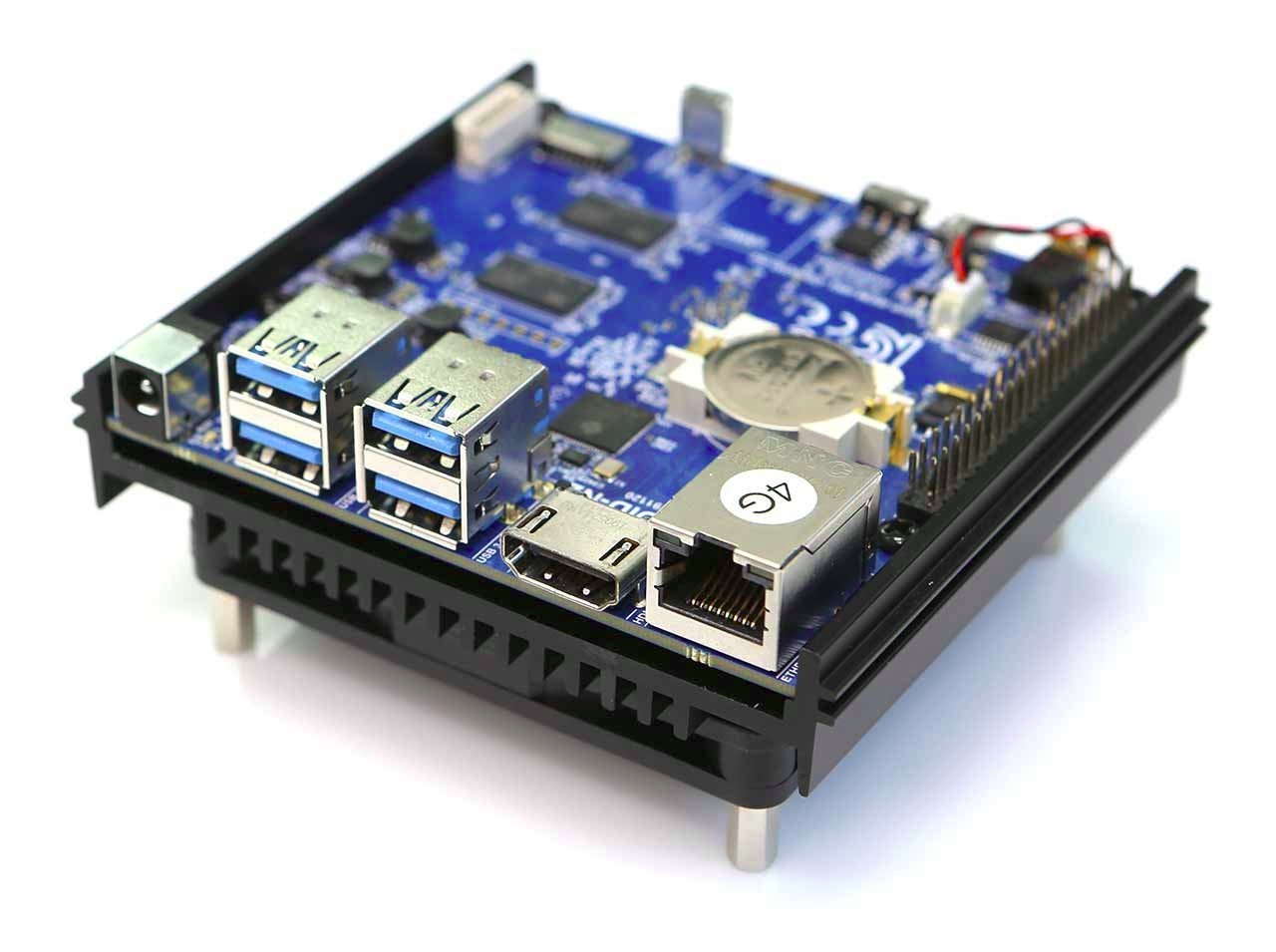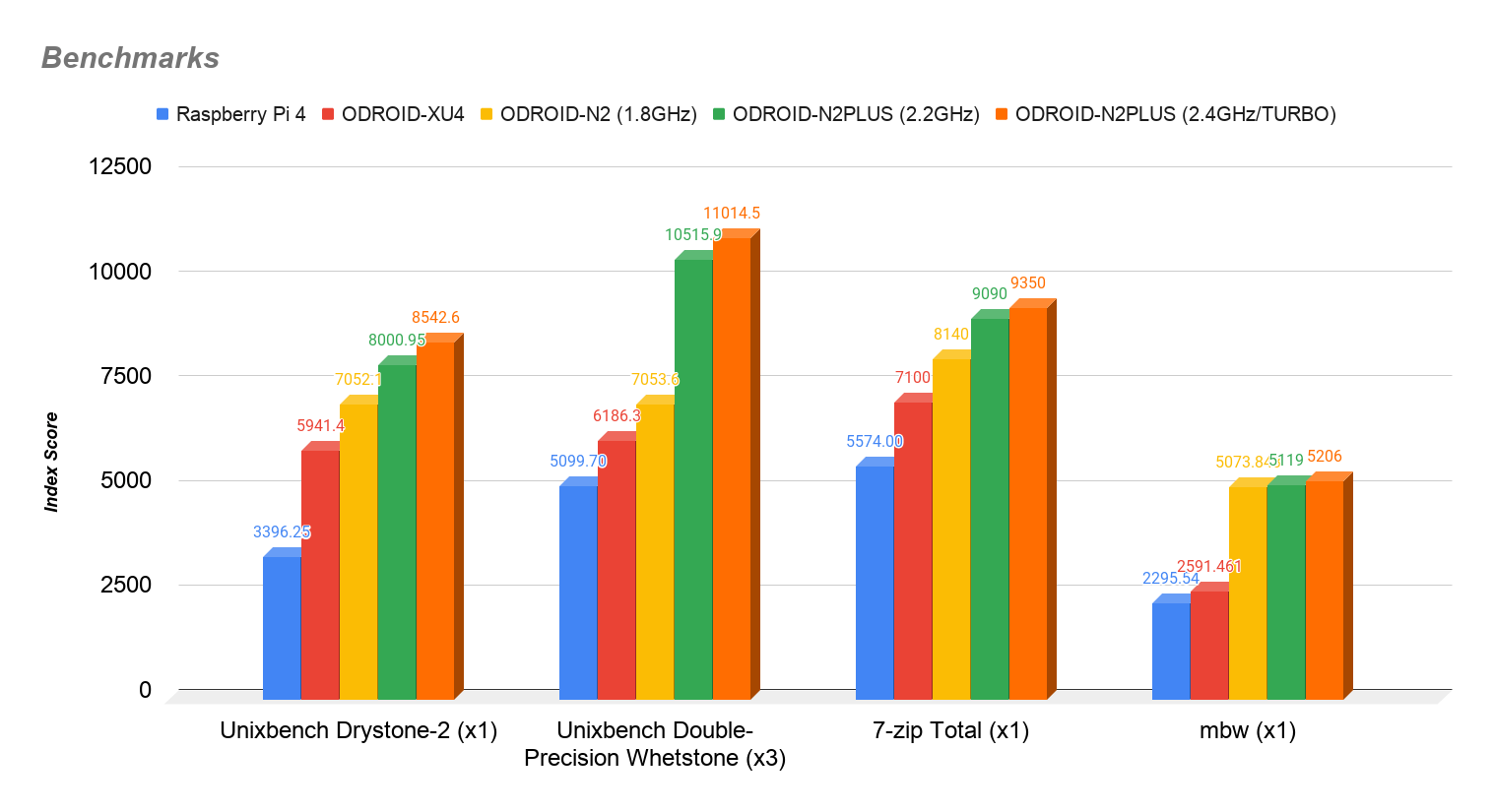Announced in February 2019, ODROID-N2 Amlogic S922X SBC launched the following month with 2GB to 4GB RAM, HDMI 2.0 output, Gigabit Ethernet, multiple USB 3.0 ports with pricing starting at $63 making very good value for an hexa-core Cortex-A73/A53 processor.
The company has now announced an upgraded with ODROID-N2 Plus SBC featuring Amlogic S922X Rev.C bringing the Cortex-A73 big core maximum clock frequency from 1.8 GHz to 2.2GHz. But Hardkernel also found out they could overclock the processor up to 2.4 GHz in all 300 boards they have delivered a 33% boost over the original ODROID-N2 board. The Cortex-A53 cores are also a bit faster up to 2.0 GHz.

ODROID-N2+ specifications:
- SoC – Amlogic S922X Rev.C hexa-core big.LITTLE processor with 4x Arm Cortex A73 cores @ up to 2.2/2.4GHz, 2x Arm Cortex A53 cores @ 2.0GHz, Arm Mali-G52 GPU @ 846MHz; 12nm manufacturing process
- System Memory – 2GB or 4GB DDR4 RAM @ 1320 MHz
- Storage – 8MB SPI flash, eMMC flash module socket, micro SD card slot
- Video & Audio Output – HDMI up to 4K @ 75 Hz, AV port (composite video + stereo audio)
- Connectivity – Gigabit Ethernet RJ45 port
- USB – 4x USB 3.0 ports, 1x micro USB 2.0 OTG port
- Expansions – 40-pin GPIO header with 2x I2C, UART, 6x PWM, SPI, S/PDIF, 2x ADC, and GPIOs
- Misc – 2x system LEDs, SPI/eMMC boot select switch, IR receiver,
2-pin header for RTC battery, RTC CR2032 battery holder, 2-pin header for optional fan - Debugging – 1x UART header for serial console
- Power Supply – DC power barrel jack
- Power consumption – Idle: 1.6~1.8 Watt; Heavy load: 5.9~6.2 Watts using stress-ng –cpu 6 –cpu-method matrixprod; Note ODROID-N2 consumes 5.2~5.3 Watts under the same test.
- Dimensions – Baord only 90 x 90 mm; with heatsink: 100 x 91 x 18.75mm
- Weight – 200 grams

Besides the faster processor, the board also got a CR2032 battery holder instead of a 2-pin header to connect a battery, and the heatsink is now much thinner.
The board is entirely software compatible with ODROID-N2 SBC, and can run Android, Ubuntu 18.04/20.04, and other operating systems listed in the Wiki. One of the advantages of the faster processor is the ability to run GameCube retro games smoothly on 64-bit Android OS.
With the upgrade, ODROID-N2 Plus is about twice as fast as a Raspberry Pi 4 (at 1.5 GHz) with some benchmarks.

While there’s an optional cooling fan, the board can run fanless and the temperature does not go over 80°C under stress in a room with 35°C ambient temperature. If you enable the fan, the CPU temperature drops to around 65°C. You find more benchmarks, metrics, and videos about the new board in the announcement post in the forums.
If you’ve seen enough and would like to purchase an ODROID-N2 Plus board, you can do so on Hardkernel store for $79 with 4GB RAM, and the 2GB RAM model will become available on July 21 for $63. If the shipping fee is a bit high to your country, you may want to wait for the board to become available on Ameridroid, where you can also get a discount using CNXSFWSUPPORTER2 ($2 off orders of $20+) or CNXSFWSUPPORTER6 ($6 off orders of $100+) coupons/
Thanks to T for the tip.

Jean-Luc started CNX Software in 2010 as a part-time endeavor, before quitting his job as a software engineering manager, and starting to write daily news, and reviews full time later in 2011.
Support CNX Software! Donate via cryptocurrencies, become a Patron on Patreon, or purchase goods on Amazon or Aliexpress




